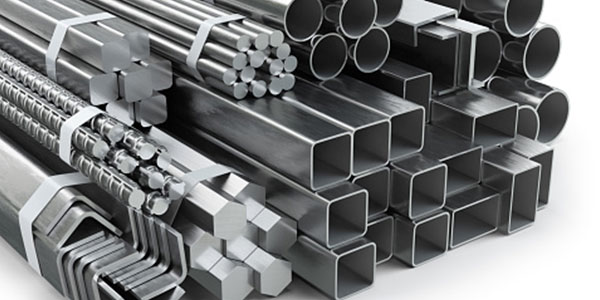Steels

Applications and Characteristics
There are over 3,500 different grades of steel, encompassing unique physical, chemical, and environmental properties. These properties include density, elasticity, melting point, thermal conductivity, strength, and hardness. To make different grades of steel, manufacturers vary the types and quantities of alloy metals, the amounts of carbon and impurities, the production process, and the way the resulting steels are worked.
Commercial steels are generally classified into four groups that differ according to their metal alloy content and end-use applications:
- Carbon steels include low carbon (less than 0.3% carbon), medium carbon (as much as 0.6% carbon), high carbon (as much as 1% carbon), and ultra-high-carbon (as much as 2% carbon) steels. Low carbon steel is the most common and the weakest of the three types. It’s available in a wide array of shapes, including sheets and beams. The higher the carbon content, the more difficult the steel is to work with. High carbon and ultra-high-carbon steels are used in cutting tools, radiators, punches, and wires.
- Alloy steels contain other metals such as aluminum, copper, or nickel. They may be used in auto parts, pipelines, and motors.
- Stainless steels always contain chromium and maybe also nickel or molybdenum. They are shiny and generally resistant to corrosion. The four main types of stainless steel are ferritic, which is similar to carbon steel and strongly resistant to stress corrosion cracking but is not good for welding; austenitic, which is the most common and good for welding; martensitic, which is moderately resistant to corrosion but high in strength; and duplex, which consists of half ferritic and half austenitic steels and is stronger than either of those two types. Because stainless steels are easily sterilized, they are often used in medical equipment and instruments and food production equipment.
- Tool steels are alloyed with hard metals such as vanadium, cobalt, molybdenum, and tungsten. As their name suggests, they are often used to make tools, including hammers.
Since 1984
We are proud to support our local communities with jobs that offer good working environment, excellent pay and benefits, growth opportunities and stability. Proud to be an American Manufacturer and a Woman Owned Business.
Contact Us Today